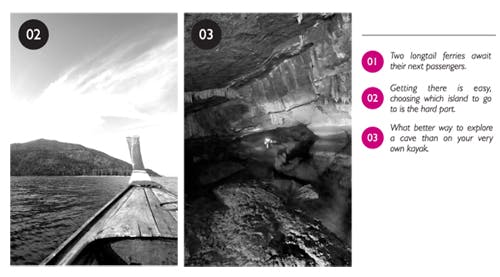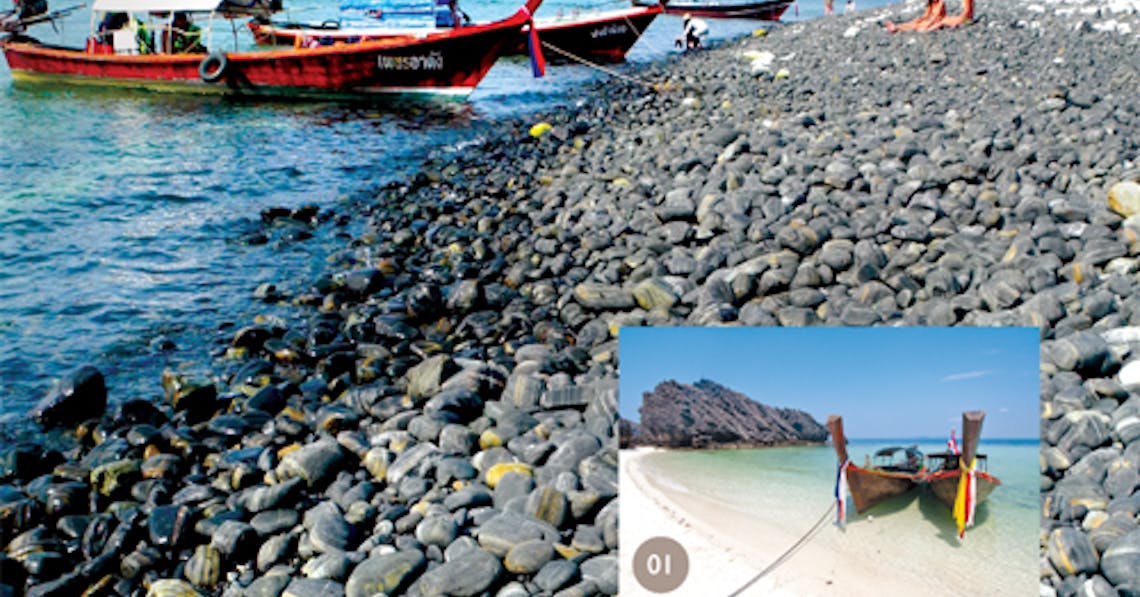To the south of Thailand, in an area becoming known for its political discord, lies a group of fifty-one islands where conflict and controversy don’t seem to exist. Barely touched by mankind’s reconstructive surgical hands, these islands represent the beauty and simplicity that once was.
Known to most as the Tarutao National Park, Koh Tarutao and its fifty-plus relatives are more mystical than national to locals. As the tale goes, these Andaman Sea islands were once cursed by a bewitched Malaysian princess and were considered lost. And so, lost and forgotten they remained until 1936, when the Corrections Department of the Thai government converted this mystical paradise into a not-so mystical penal colony. For ten years prisoners occupied Koh Tarutao, until the onset of World War II when supplies to the island suddenly stopped. Former convicts and guards were forced to join hands as they pillaged for survival. This is how, the Chao Lay, or, sea tribes, were born. In 1946, their pillaging party came to an abrupt halt when British forces made the pillagers into prisoners once again. Koh Tarutao was evacuated and repopulated with friendlier fishermen and farmers until 1972 when it and the rest of the islands, except for Koh Lipe, were reclaimed by the government and converted into Thailand’s first marine national park in 1974.

Today the group of islands is part of the ASEAN Heritage Parks and is the largest and, perhaps, most impressive of the bunch, with rich coral reefs that house 25% of the world’s tropical fish species and other endangered species such as the rarely sighted dugong and leather back turtles. The dense mangroves and verdant mountainous terrain of these islands are complemented by long stretches of sandy, unspoiled beaches which today remain mostly unknown to tourists who are more familiar with all day sun-soaking and late-night drinking in the popular western islands of Phuket and Krabi. For those looking for a more sober adventure, one of the many islands of the Tarutao National Park may be exactly what you need.
Of the fifty-one islands, only three can actually be visited for more than a day and of those three, the largest and best known is Tarutao, hence the name of the National Park. The island extends for 152 square kilometres of pure nature, give or take a couple of restaurants and bungalows. Don’t be fooled though, as there is more to do on this island than you will ever be able to do in a shopping mall. Ride a bike through the forest trails, raft through the crocodile caves, bird watch in the mangrove forests, snorkel in the crystal clear waters or visit the prisons, where not even a ghost of an unhappy prisoner still lives. If you’re craving a bit more than the primal adventure and unity with nature, there’s also a small exhibition centre where you can go to learn about the history of the archipelago, or better yet, take a long tail boat and visit the rest of the archipelago yourself!
The second largest of the three core islands is Koh Adang, just 40 kilometres from Tarutao. Impressive waterfalls hide between the mountainous forests of this undeveloped and untarnished island which can often be mistaken for a snippet of heaven. Take a somewhat unkempt trail to the viewpoint at the top of Koh Adang, we guarantee it’ll be worth it! Koh Lipe, an outsider to the marine park family, is a hop and a trot away from Koh Adang and is more popular with the hippie backpackers – consider it a larger version of Pai. Resorts and restaurants cluster the landscape and detract from the protected beauty of Koh Lipe’s sister islands. A small community of Chao Lay people still reside on the more remote corners of the island…there’s even a school!
The action doesn’t stop at the front line of this national park, as the smaller islands of the archipelago also offer experiences to last you a lifetime, even though overnight stays aren’t permitted. Koh Rawee has the best snorkelling grounds of all the islands, but Koh Hin Ngam comes in at a close second. It is the only gravel beach of them all, and although there are no facilities on the island itself, the surrounding coral reefs will be enough to dazzle you. Koh Khai, literally translated as Egg Island, couldn’t have a more appropriate name. Every year turtles migrate to this peaceful haven to safely lay their eggs. If you’re lucky and extremely quiet, you may even be able to catch the live show.
Less may sometimes be better, but in the case of Tarutao National Park, such an adage cannot apply. The more islands you visit the better, but there are a few things to keep in mind. These islands cannot be accessed by plane. Airlines such as Air Asia or Nok Airways offer flights to Trang and Hat Yai in Satun, the southernmost province of Thailand. Take a minivan to Pak Bara Pier then catch one of the regularly scheduled speed boats which stop at the three main islands, Tarutao being the first. From there, getting a long-tail boat or a ferry to the smaller surrounding islands is easy! Be sure to plan your trip between the months of November and April, when the weather is good, and more importantly, when the ferries are operating, otherwise you may be featured on the next season of Survivor (no joke – the hit American series Survivor was filmed there in 2006!). Also, be sure to plan your trip soon, as neglectful tourists and unpredictable environmental changes are taking a toll on the reefs, forcing the government to prohibit diving in certain areas. If you decide to spend more than a day at the Marine National Park, make sure you get permission to do so from the National Park Office in Phante Malacca on Koh Tarutao. After that, pitch a tent or camp out in a rented bungalow and relax while you enjoy the rustling of the trees, the whispers of the ocean and the quiet night of absentee tourists. Not too bad for a prison-island, huh?
